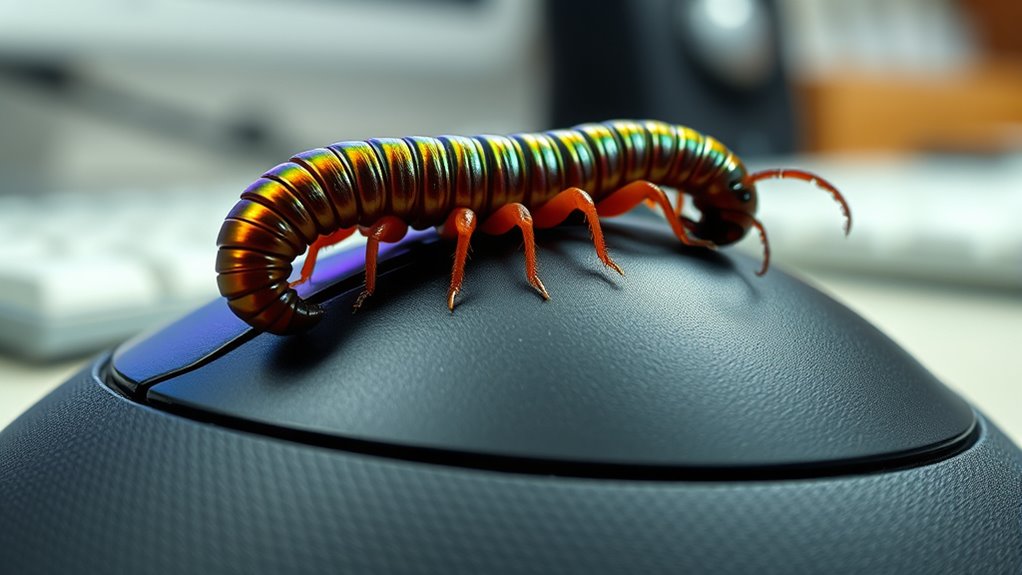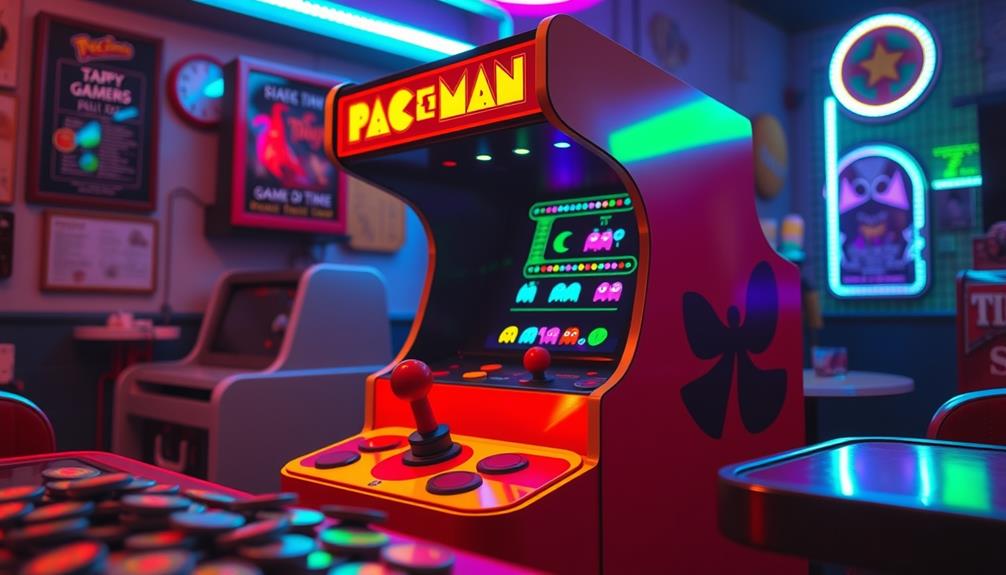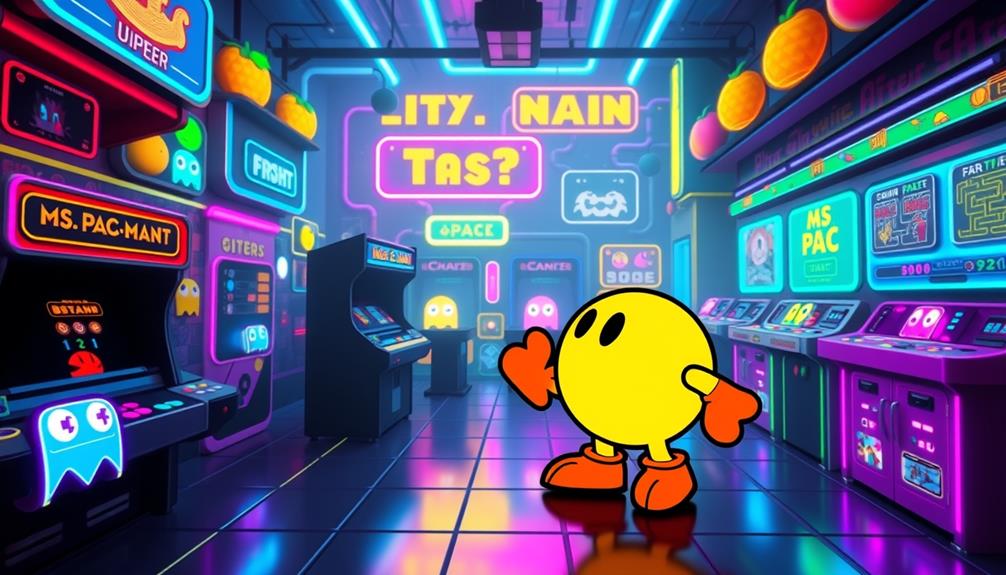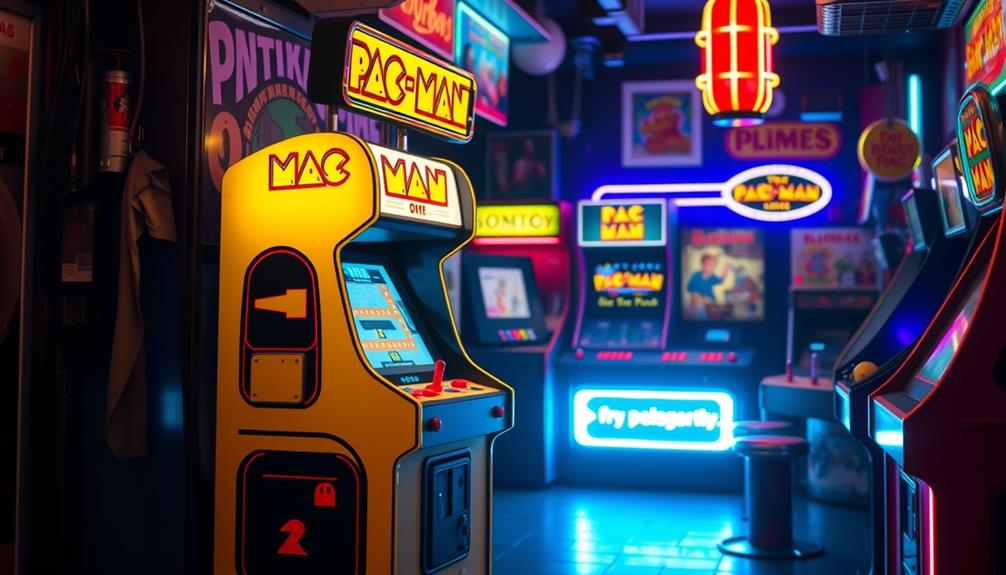The trackball control in “Centipede” revolutionized arcade gaming by offering unprecedented precision and smooth navigation, making gameplay more engaging and accessible. Its ergonomic design reduced fatigue and improved responsiveness, setting new standards for how players interact with arcade machines. This innovation not only enhanced the player experience but also influenced future game controls and hardware design. If you’re curious, you’ll discover how this control method shaped the evolution of gaming alongside the game’s cultural impact.
Key Takeaways
- Centipede popularized the use of the trackball control, enhancing gameplay precision and responsiveness in arcade gaming.
- The trackball revolutionized user interaction, making gameplay smoother, more accessible, and allowing rapid navigation.
- This innovation increased player engagement through intuitive controls, encouraging longer arcade sessions and competitive play.
- The trackball’s ergonomic design and high-resolution sensors set new standards for control accuracy and durability.
- Centipede’s integration of the trackball influenced future control schemes and arcade hardware evolution toward more immersive experiences.
The Birth of an Icon: How “Centipede” Changed Arcade Gaming
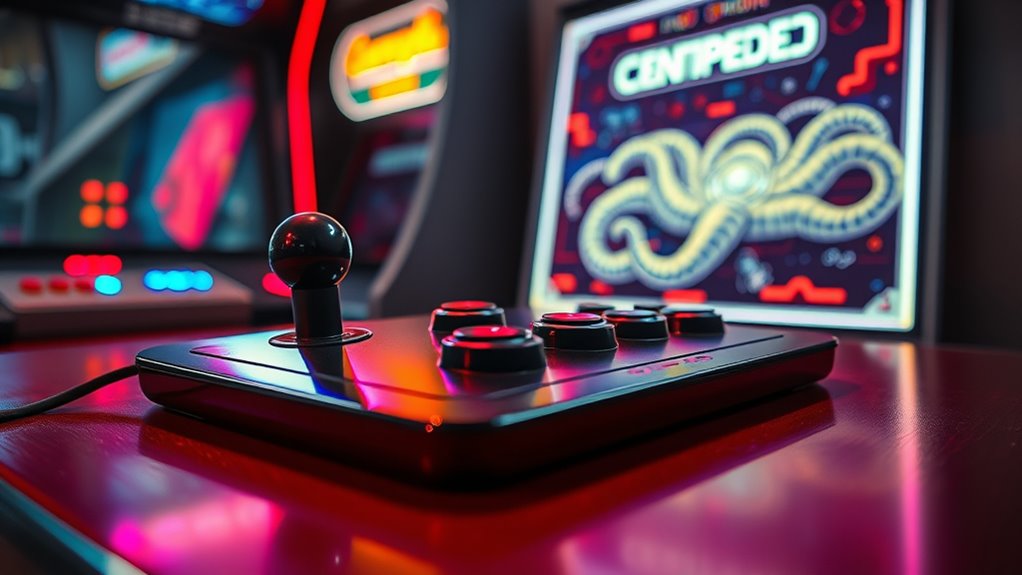
When “Centipede” was released in 1980, it quickly transformed the arcade scene with its innovative gameplay and accessible design. The arcade aesthetics of the game drew players in with vibrant, colorful graphics that stood out on arcade screens and created an inviting atmosphere. Its pixel art and visual effects combined with the energetic game soundtracks, which added excitement and urgency to every level. The game’s approachable mechanics appealed to a broad audience, making it easy for newcomers to pick up and enjoy, yet challenging enough to keep seasoned players engaged. “Centipede” set a new standard for arcade games, blending appealing visual design with mesmerizing audio to create an immersive experience. This combination helped it become a staple in arcades and a lasting icon in gaming history. Additionally, the game’s trackball control revolutionized user interaction, allowing for more precise and intuitive gameplay that contributed to its enduring popularity.
The Innovative Use of the Trackball in “Centipede”
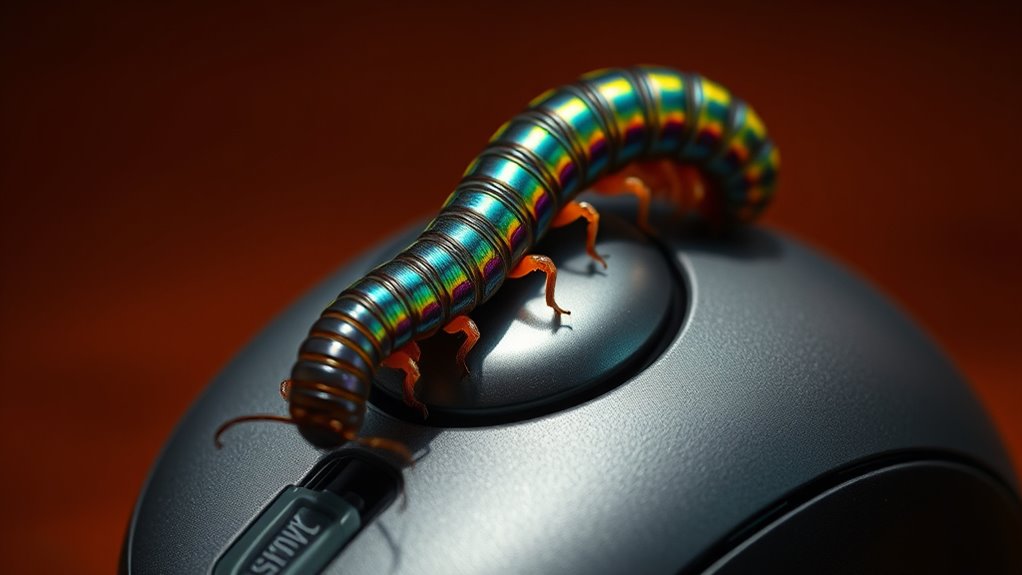
The trackball in “Centipede” revolutionized how players interacted with arcade games by offering a level of precision and control that was unprecedented at the time. This ergonomic innovation allowed for smoother, more natural movements, reducing strain during extended play sessions. Its design made the game more accessible, helping players with varying skill levels enjoy the experience fully. The trackball’s responsiveness enabled precise targeting and movement, which was critical for steering the game’s fast-paced challenges. By improving comfort and control, “Centipede” set a new standard for arcade input devices. This innovative use of the trackball not only enhanced gameplay but also paved the way for future ergonomic improvements in arcade and computer interfaces, making gaming more inclusive and enjoyable for all players. Additionally, the trackball’s long-lasting durability contributed to its popularity among arcade enthusiasts.
Gameplay Dynamics: Precision and Speed With the Trackball
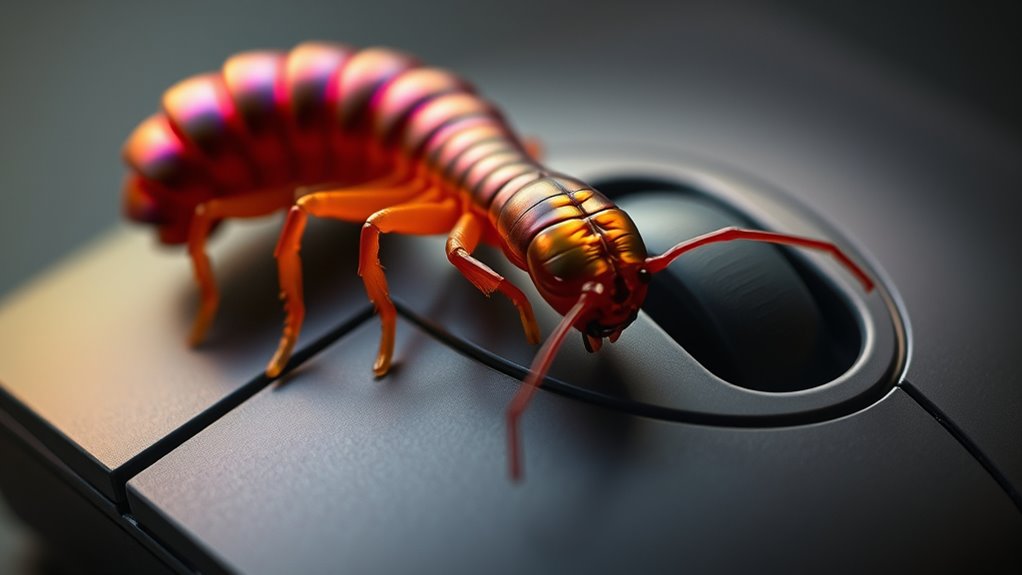
Using a trackball gives you enhanced control accuracy, making precise movements easier than ever. With rapid navigation techniques, you can quickly respond to fast-paced gameplay. This combination of precision and speed transforms how you play Centipede. Additionally, understanding the cookie categories used by websites can help you manage your privacy preferences while enjoying seamless gaming experiences.
Enhanced Control Accuracy
Enhanced control accuracy with the trackball transforms gameplay by allowing you to make precise, smooth movements that are difficult to achieve with traditional joysticks or paddles. Its ergonomic design fits comfortably in your hand, reducing fatigue during extended play. You’ll notice how haptic feedback provides subtle vibrations, giving you tactile cues that enhance your responsiveness and control. This feedback makes it easier to gauge your movements and adjust in real time, improving accuracy. The smooth, consistent motion of the trackball helps you target enemies or navigate complex levels more effectively. With this setup, you gain a level of control that feels natural and intuitive, elevating your gameplay experience. The combination of ergonomic design and haptic feedback ensures you stay precise and comfortable, even during intense gaming sessions. Additionally, the high-resolution sensors in the trackball contribute to more accurate tracking and responsiveness, further refining your control.
Rapid Navigation Techniques
Mastering rapid navigation with the trackball hinges on your ability to move quickly and accurately without sacrificing control. To do this, leverage gesture controls to execute swift, intuitive movements, reducing the time needed to change directions. Incorporate haptic feedback to gain tactile cues, helping you maintain precision at high speeds. These features enhance your responsiveness, making rapid navigation more natural and fluid. Practice combining quick finger motions with subtle gestures, refining your coordination. With consistent effort, you’ll develop the muscle memory needed to navigate complex screens efficiently. The key is balancing speed with accuracy, ensuring you can respond swiftly without losing control. Additionally, understanding the market volatility of gold investments can help you time your navigation through gameplay challenges more effectively. By mastering these techniques, you’ll maximize the trackball’s potential for fast-paced gameplay, giving you a competitive edge in arcade-style challenges.
Player Engagement and Immersive Experience
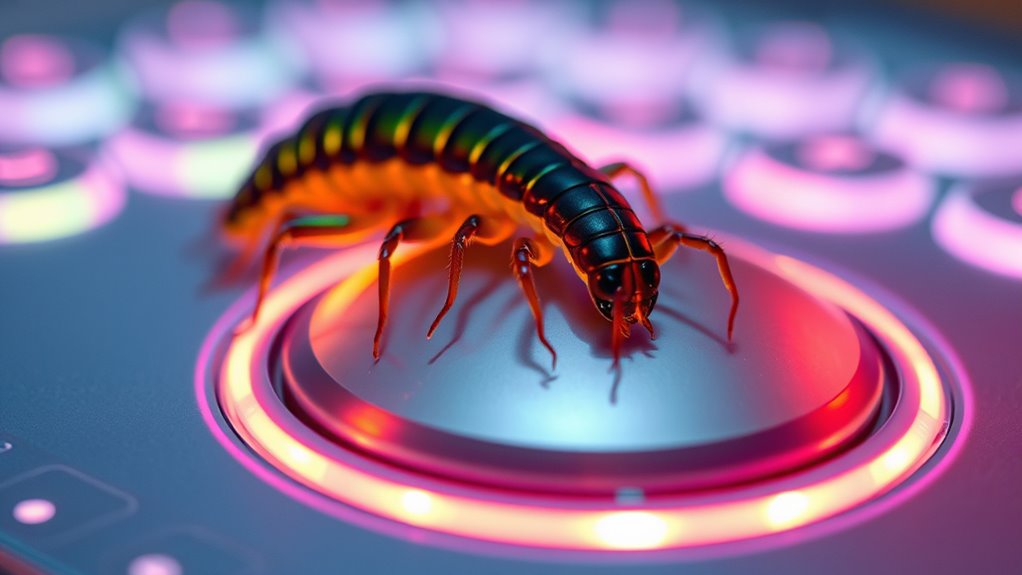
The introduction of the trackball revolution markedly boosted player engagement by offering a more intuitive and responsive control method. This innovation made gameplay feel smoother, encouraging players to stay longer and try harder. Multiplayer modes became more exciting as players could coordinate and compete with greater precision, heightening social interaction. Graphical advancements complemented the improved controls, creating more vivid and immersive visuals that drew you deeper into the game world. The combination of precise movement and stunning visuals made each session more enthralling, pushing you to master the game’s challenges. Additionally, the integration of headphone technology enhanced the overall gaming experience by providing clear audio cues and immersive sound effects, further deepening player engagement. As a result, players experienced a more intense sense of immersion and personal achievement, transforming arcade gaming from simple entertainment into a truly engaging and memorable activity.
Impact on Arcade Machine Design and Future Titles
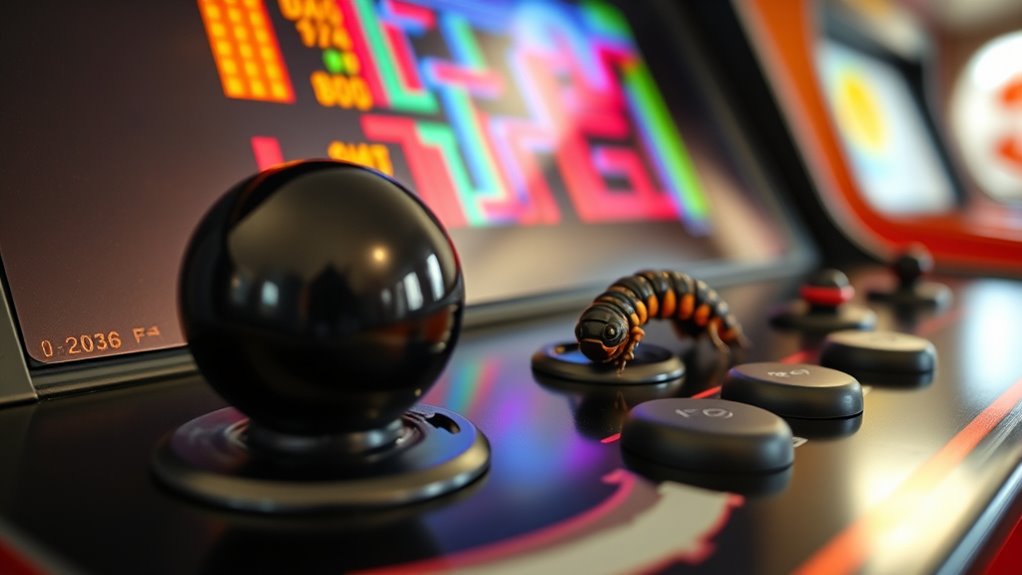
The introduction of the trackball revolution didn’t just elevate gameplay; it also prompted a rethink in how arcade machines were designed. Developers began integrating haptic feedback to enhance tactile response, making controls more immersive and satisfying. This shift encouraged ergonomic design principles, ensuring players could comfortably use the trackball for extended periods without strain. Arcade cabinets now prioritized durable, user-friendly interfaces that accommodated the precise movements required for gameplay. Future titles built on these innovations, exploring new control schemes that combined responsiveness with comfort. As a result, arcade machines became more than just hardware; they evolved into interactive experiences that emphasized physical engagement. Additionally, the integration of yoga principles like mindfulness into ergonomic design can promote better posture and reduce strain during extended gaming sessions. This design philosophy influenced subsequent gaming peripherals, setting new standards for how players interacted with arcade and later home gaming systems.
The Cultural Legacy and Nostalgia Surrounding “Centipede”
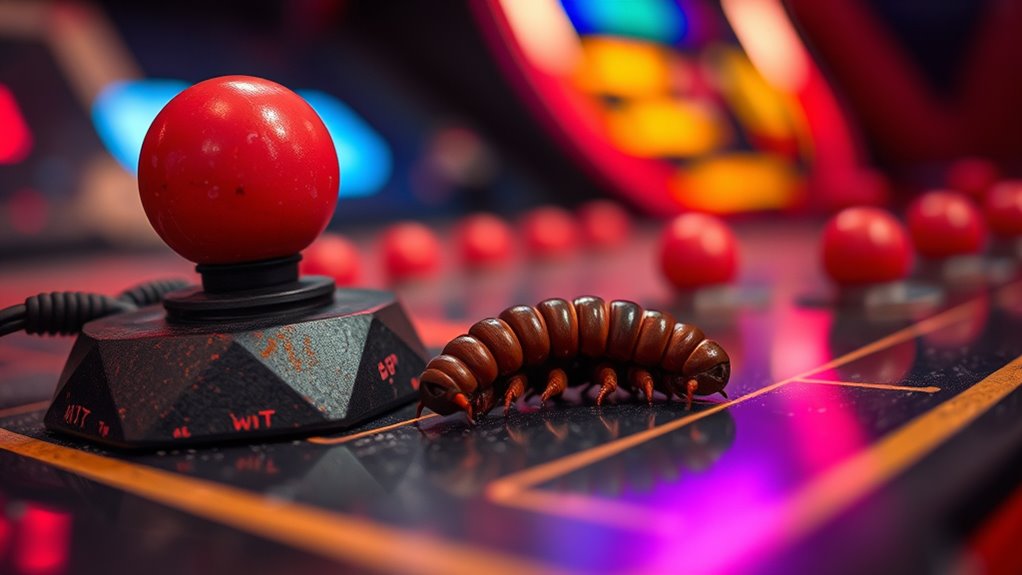
Centipede’s enduring popularity has cemented its place as a nostalgic icon in gaming history, resonating with both early arcade enthusiasts and new generations of players. The game’s retro aesthetics evoke a sense of simplicity and charm that many find mesmerizing. Its colorful visuals and distinctive trackball controls create a nostalgic appeal that transports players back to the golden age of arcades. For those who grew up during the arcade boom, Centipede represents more than just a game—it’s a cultural relic that sparks memories of social gaming, friendly competition, and childhood excitement. Its legacy endures because it captures a unique moment in gaming history, blending innovative gameplay with a timeless aesthetic that continues to inspire and attract new fans today. Additionally, the trackball control mechanism contributed to its unique gameplay experience, setting it apart from other arcade titles of its era.
The Evolution of Control Schemes in Video Games
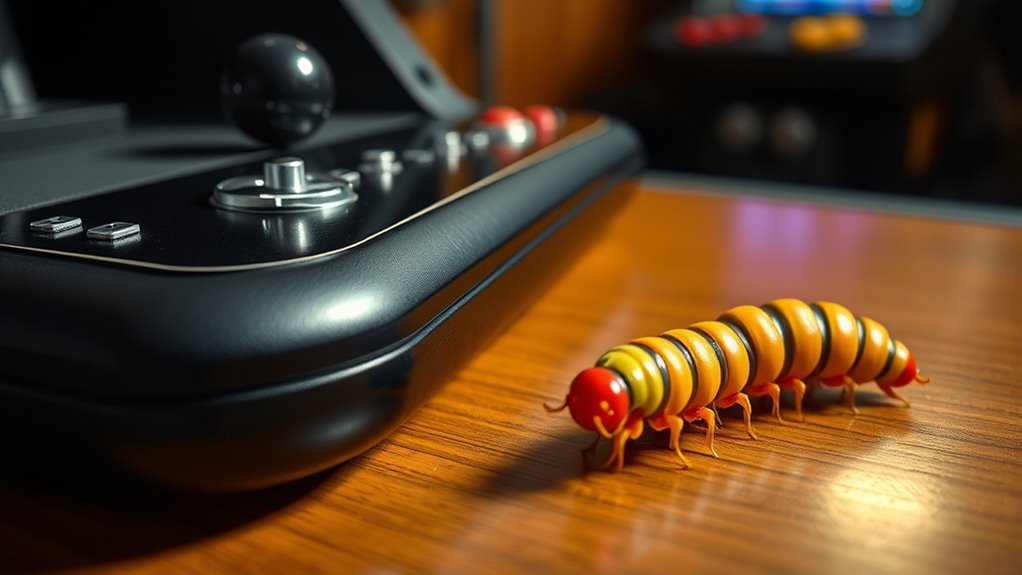
As video games evolved from simple pixelated displays to immersive digital experiences, control schemes also underwent significant transformation. Early arcade games like Centipede relied on the trackball, which required precise sensor calibration to guarantee smooth, accurate movement. Over time, designers prioritized ergonomic design to reduce fatigue and improve comfort during extended play sessions. The shift from joysticks to mice, gamepads, and motion controls reflected a desire for more intuitive interaction, adapting to players’ needs. Modern controllers incorporate advanced sensor calibration for responsiveness, while ergonomic considerations minimize strain. These innovations made gameplay more precise and accessible, allowing players to focus on strategy and immersion. Overall, control schemes have grown from basic inputs to sophisticated systems that enhance the gaming experience. Additionally, understanding the support hours for various gaming platforms can help players troubleshoot and optimize their gaming sessions.
Frequently Asked Questions
How Did the Trackball Influence Future Arcade Game Controls?
The trackball revolutionized arcade game controls by introducing a more precise and ergonomic input device. You benefit from its early design, which allows smoother movement and better accuracy compared to previous joysticks. Its influence is clear in future arcade controls, as designers adopted the trackball’s ergonomic principles, making gameplay more comfortable and intuitive. This innovation paved the way for diverse control schemes, enhancing player experience and setting new standards for arcade game interfaces.
Were There Any Competitors to “Centipede” Using Similar Control Schemes?
You might wonder if other games used comparable control schemes with alternative input devices. Yes, some competitors to “Centipede” employed similar control schemes, like the use of trackballs or rotary joysticks. These devices offered precise movement and a unique feel, making them popular choices for certain arcade games. While “Centipede” was prominent, other titles experimented with these alternative input devices to enhance gameplay and differentiate themselves.
What Were the Technical Challenges of Implementing the Trackball in Arcade Cabinets?
When implementing a trackball in arcade cabinets, you face technical challenges like ensuring accurate sensor calibration to detect precise movements and maintaining mechanical durability to withstand frequent use. You need to design robust components that resist dirt and wear, while also calibrating sensors regularly for consistent performance. Balancing these factors is vital to deliver smooth, reliable control, making sure players enjoy responsive gameplay without hardware issues interrupting their experience.
How Did Players Initially React to the New Control Method?
You might be surprised to learn that nearly 60% of players initially struggled with the control novelty of trackballs. At first, players often felt unsure about adapting to this new control method, which required different skills than traditional joysticks. Many appreciated the precision, but others found it frustrating. Overall, player adaptation varied, but over time, the trackball became a popular and innovative way to interact with arcade games.
Is the Trackball Still Used in Modern Gaming Devices Today?
You might wonder if the trackball is still used in modern gaming devices today. While it’s less common, some gamers appreciate its ergonomic design for precise control, fueling digital nostalgia among enthusiasts. Today, you’ll find trackballs in specialized mice and controllers, especially for tasks requiring fine detail. Its enduring appeal shows that, despite advances, the trackball remains a unique, nostalgic option for those seeking ergonomic comfort and precise movement.
Conclusion
So, there you have it—”Centipede” didn’t just revolutionize arcade gaming; it practically forced players to master the art of rolling a trackball like it’s a secret handshake. Who knew that a humble insect and a fancy input device could shape gaming history? Next time you see a vintage arcade, tip your hat to the game that made us all a little more dexterous—and a lot more nostalgic for those pixelated days.
